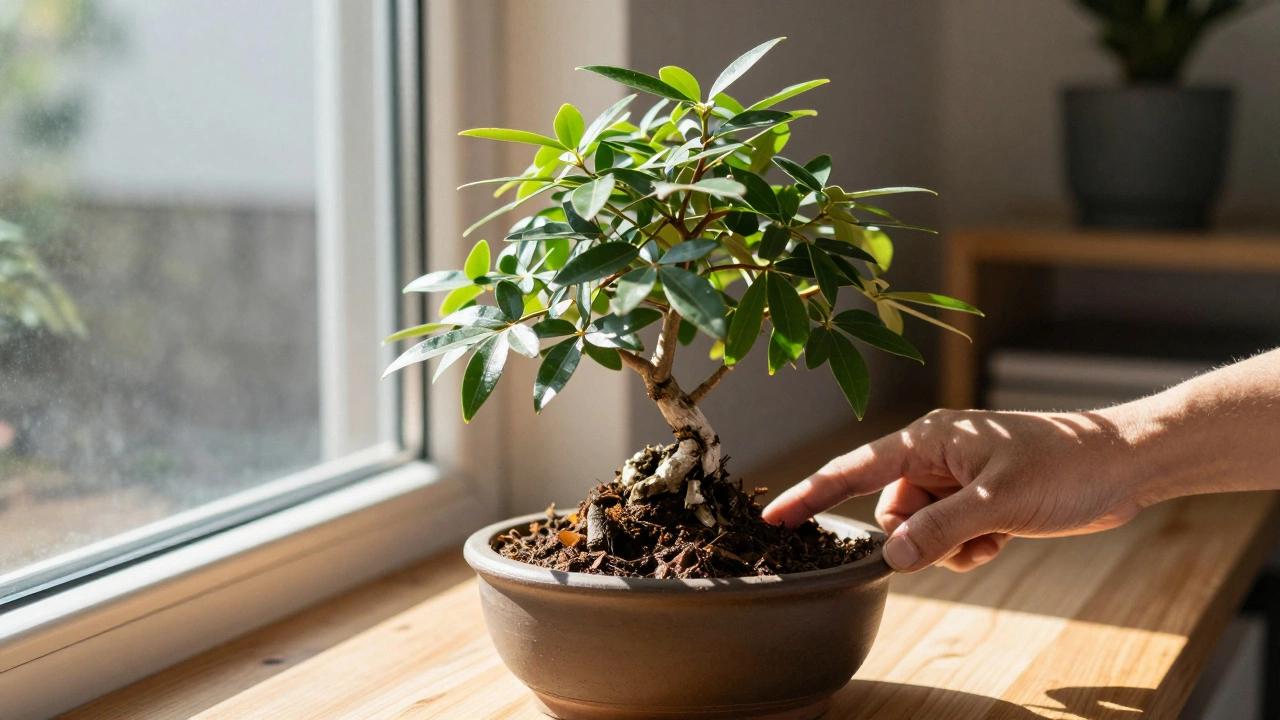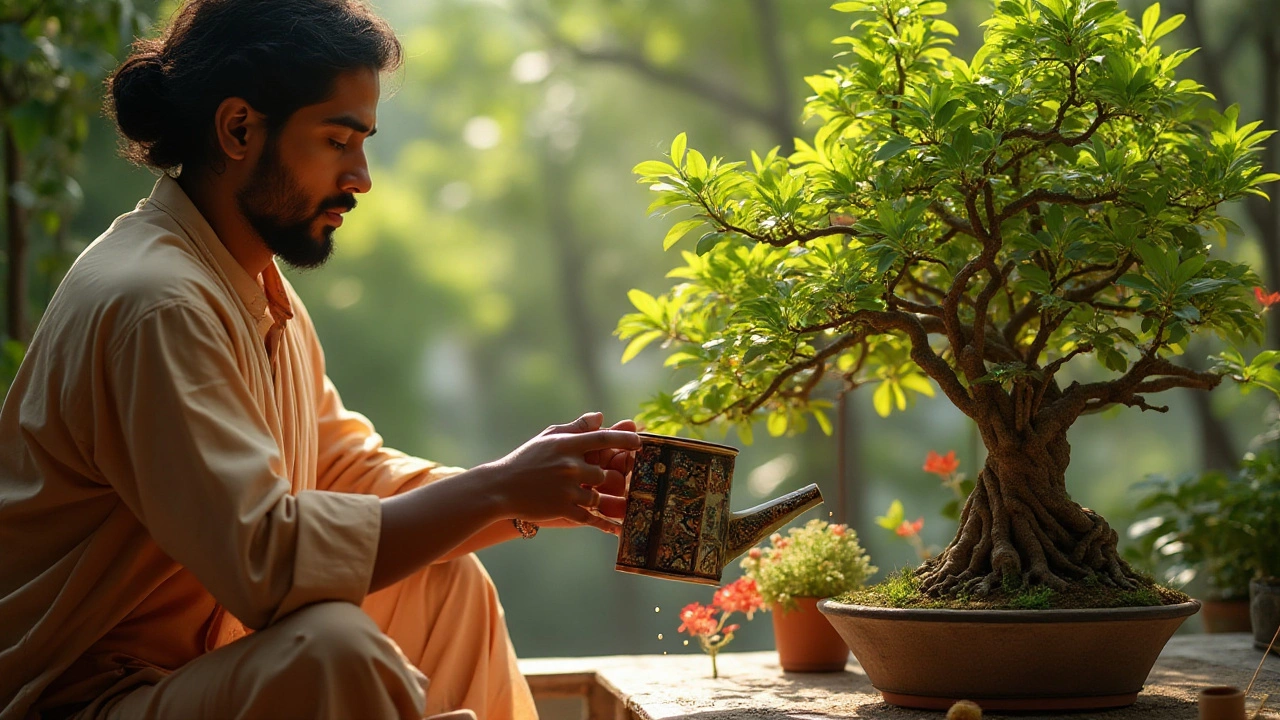Learn how to care for a bonsai tree as a beginner with simple, practical steps on watering, light, soil, pruning, and seasonal care. Avoid common mistakes and keep your mini tree thriving for years.
Bonsai Watering: How to Water Bonsai Trees Right Every Time
When you own a bonsai, a miniature tree grown in a container using traditional Japanese techniques. Also known as penjing, it isn't just a plant—it's a living sculpture that needs precise care to survive. And nothing kills a bonsai faster than bad watering. Most people think it’s like watering a houseplant: fill the pot, wait a few days, repeat. But bonsai are different. Their small pots dry out fast, yet their roots are sensitive. Water too little, and they shrivel. Water too much, and their roots rot. The key isn’t frequency—it’s understanding bonsai soil, a special mix of akadama, pumice, and lava rock that drains quickly but holds just enough moisture.
Why does this matter? Because regular garden soil holds water like a sponge. If you use it, your bonsai’s roots sit in wetness and suffocate. That’s why you’ll find guides on overwatering bonsai, a common mistake where people water daily out of fear, leading to yellowing leaves and root decay in our collection. You need to check the soil daily—not by guesswork, but by sticking your finger in. If the top inch is dry, it’s time to water. And when you do, soak the whole pot until water runs out the bottom. Let it drain completely. No standing water. No saucers holding leftovers. This isn’t just advice—it’s the difference between a tree that lasts decades and one that dies in months.
Bonsai watering changes with the season. In India’s hot summers, you might need to water every day. In winter, once every three or four days may be enough. Rainy monsoons? Skip watering entirely if your bonsai is outside. And don’t forget the pot size. A tiny bonsai in a 4-inch pot dries out faster than a larger one in a 6-inch pot. The same plant in direct sun needs more water than the same one in shade. That’s why the best bonsai growers don’t follow a calendar—they watch their tree. They learn its rhythm. They notice when leaves soften, when soil pulls away from the pot edges, when the pot feels light in their hands. These are the real signs, not apps or timers.
You’ll also find posts here about bonsai irrigation, systems like drip lines or self-watering pots that can help, but only if used correctly. Most beginners buy fancy gadgets thinking they’ll make care easier. But they often make it worse. A drip system set to water every day might drown your bonsai in winter. Manual watering gives you control—and connection. You’re not just feeding a plant. You’re observing it. That’s the heart of bonsai.
There’s no magic formula. No universal schedule. But there are clear rules: check the soil daily, water deeply when dry, drain completely, and never let it sit in water. Your bonsai doesn’t need you to be perfect. It just needs you to pay attention. And that’s something you can start today.
Understanding the proper watering techniques for a bonsai tree is essential for its health and beauty. This article provides a comprehensive guide on how often to water your bonsai, taking into account factors such as species, climate, and container type. With practical tips and interesting facts, bonsai enthusiasts can refine their skills to ensure their miniature trees thrive. Discover the art of bonsai watering and achieve a lush, vibrant display.

